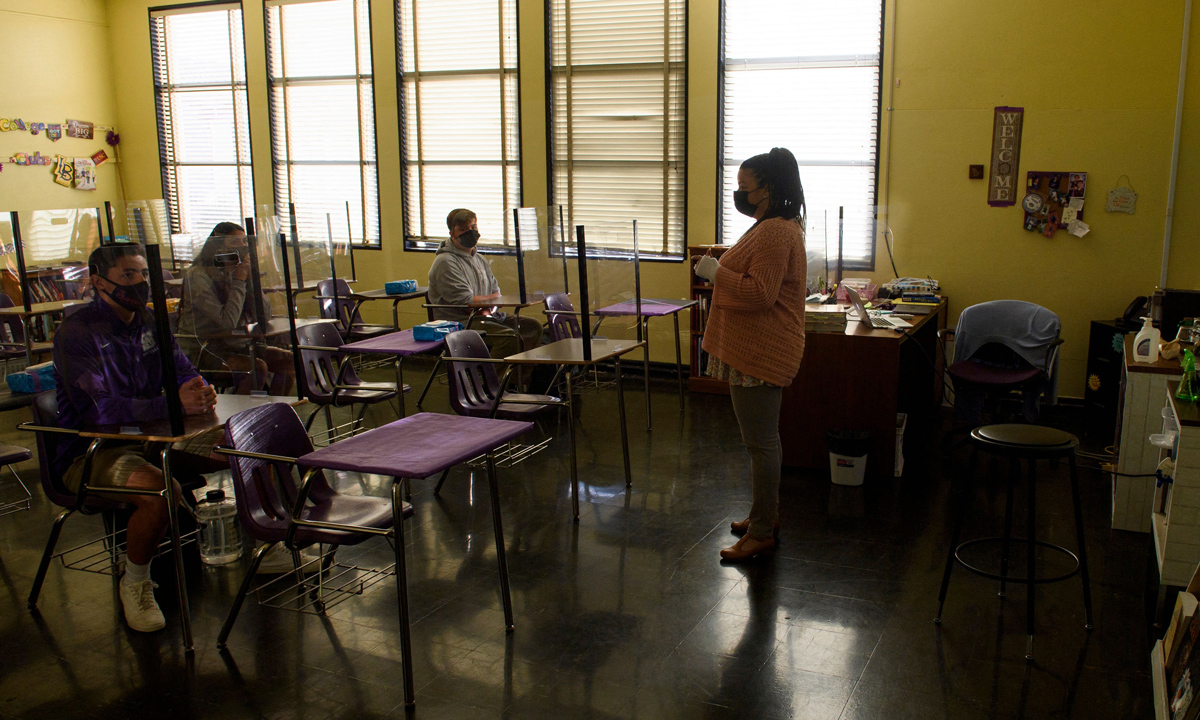Has Teacher Pay Really Plummeted in the Last Decade? Yes — But Only Due to COVID
Salaries exceeded inflation for 8 years, then took a hit during the pandemic. Trends in hiring & student enrollment make the picture even more complex

Get stories like this delivered straight to your inbox. Sign up for The 74 Newsletter
Each year, the National Education Association produces a report that details education spending in all 50 states and the District of Columbia. The latest version, Rankings of the States 2022 and Estimates of School Statistics 2023, paints a vivid picture, albeit with union spin.
In the report’s foreword, NEA’s research department warns that “it is unwise to draw conclusions based solely on individual statistics in this report.”
That sentence borders on the comical, since the primary purpose of Rankings & Estimates is to enable NEA to draw conclusions based solely on those statistics.
The union posted a Twitter thread to publicize the report, concluding that “educators across the board are underpaid” and “teachers earn 25% more in states with collective bargaining.”
“Equipped with our educator pay data, we are able to negotiate and advocate for the better wages and benefits that our educators deserve,” NEA stated.
The key point the union sought to drive home was that teachers “make thousands less than they did a decade ago,” when adjusted for inflation.
That makes a powerful sound bite but lacks context. For the first eight years of that decade, teacher salary hikes exceeded inflation by almost 2%. The entire decline in real wages occurred over the last two years.
The loss was hardly unique to teachers. The U.S. economy went from a 1% inflation rate to 8% in the last two years, as the federal government increased the money supply during the COVID pandemic. Tens of billions of those dollars went to public schools and are currently being added to teachers’ wages all over the country, bringing current education spending to $785 billion.
Despite the decline in real wages, overall per-pupil spending was still 13% above inflation over the last 10 years.
How is that possible? Two factors explain it: student enrollment and educator hiring.
The number of children enrolled in public schools declined 1.8% over the past 10 years, but the number of instructional staff — teachers, principals, counselors and other certified professionals — increased 5.2%.
In raw numbers, U.S. public schools had nearly 877,000 fewer students this year than in 2014 but 187,000 more instructional staff, of whom 62,000 were classroom teachers.
Just between 2020 and 2021, schools had 8,000 fewer students and 14,000 more teachers.
Put simply, the same amount of money spread over fewer students leads to higher per-pupil spending, but that money spread over more employees means lower average wages.
It may be desirable to hire more and more teachers, and pay them more and more money, to teach fewer and fewer students. But it’s just not sustainable in a nation already awash in historic debt.
NEA and the public schools are making hay while the sun shines, but the storm clouds are gathering. Teachers can’t enjoy double-digit raises when they’re out of a job.
Mike Antonucci’s Union Report appears most Wednesdays; see the full archive.
Get stories like these delivered straight to your inbox. Sign up for The 74 Newsletter

;)